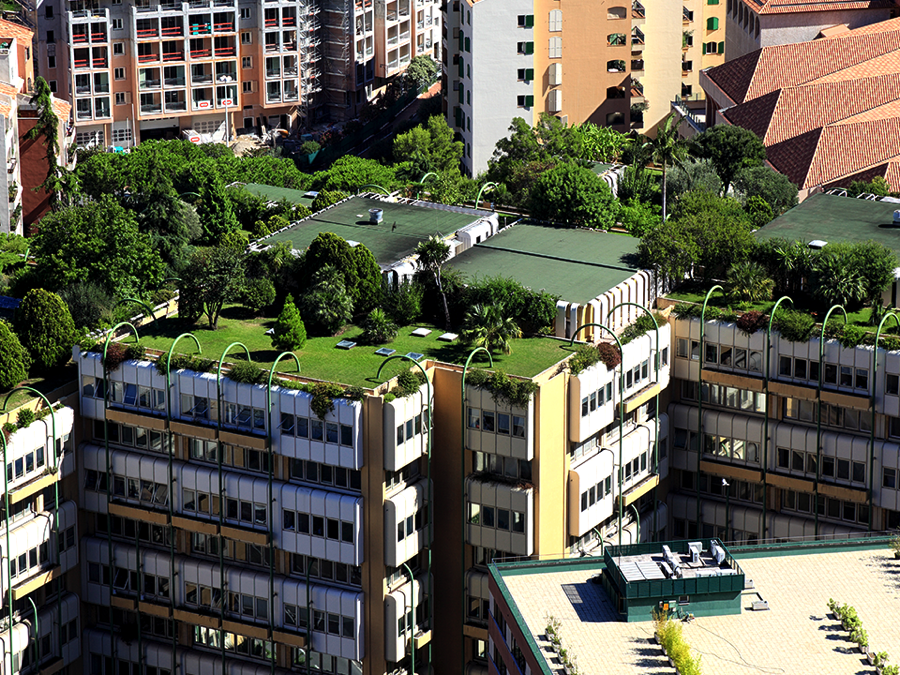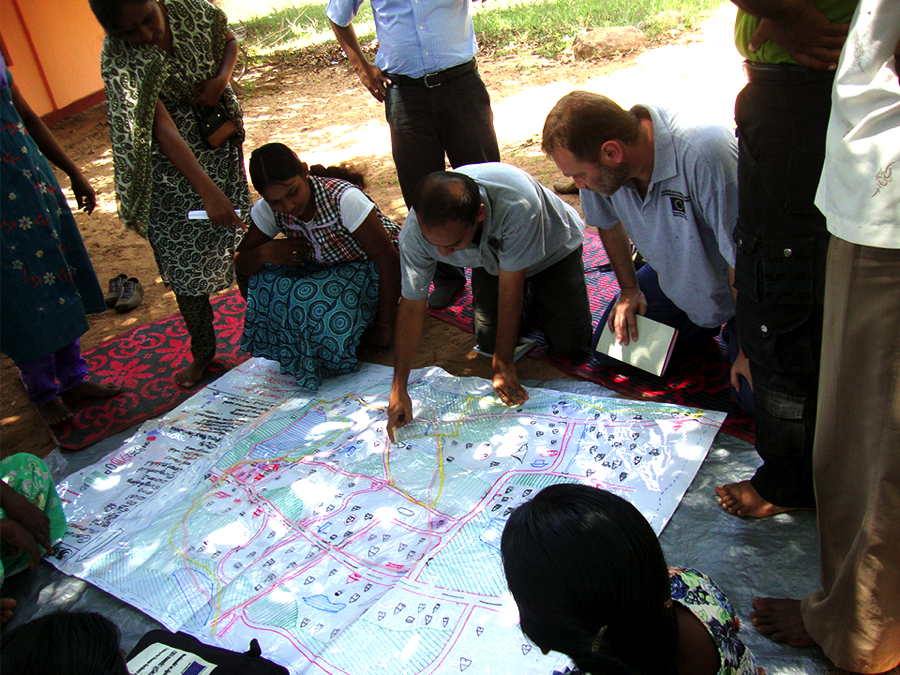Urban Centers and Climate Change: Implications from the IPCC’s New Report

Who will you meet?
Cities are innovating, companies are pivoting, and start-ups are growing. Like you, every urban practitioner has a remarkable story of insight and challenge from the past year.
Meet these peers and discuss the future of cities in the new Meeting of the Minds Executive Cohort Program. Replace boring virtual summits with facilitated, online, small-group discussions where you can make real connections with extraordinary, like-minded people.
Photo credits: IPCC
On March 31st, 2014, the Intergovernmental Panel on Climate Change (IPCC) released the second of three reports providing the most up-to-date scientific knowledge on climate change. The message of this behemoth effort from the international scientific community is as clear as the first line of the report, “Human interference with the climate system is occurring, and climate change poses risks for human and natural systems.” Although brimming with precisely gathered data points and conservative predictions, the true focus of the second report is empowering human action. As IPCC chair Rajendra Pachauri puts it, “The one message that comes out of this is the world has to adapt and the world has to mitigate,” as quoted by The Guardian.
Implications for Urban Environments
Chapter eight of the second report is devoted entirely to the implications of climate change on urban areas. Urban centers house more than half of the world’s population. Only 0.51% of global land surface is covered by cities. However, ecologically, the requirements of cities have decreased global natural land from 70% to 50% placing a large strain on the ecosystems that support human consumption in cities. Additionally, human activity in urban areas has a direct influence on the immediate microclimate. If we continue urbanization at this rate, projections show that the amount of global urban land will triple by 2030. Given this context, the report lays out the risks posed to our current global urban population.
The key risks of climate change for urban centers around the globe include rising sea levels, storm surges, heat stress, and water scarcity. Since cities around the globe are so diverse in terms of life expectancy, resource dependency, average income, etc., it is impossible to create a one-size-fits-all recommendation for urban climate change risk mitigation. The IPCC has plotted cities against four categories that assess their adaptability: local government capacity, the proportion of residents with access to risk-reducing infrastructure and services, the proportion living in buildings up to health and safety codes, and the levels of risk from climate change’s direct and indirect impacts.
One key differentiator on how resilient urban areas will be in the face of climate change is the country’s income level. Cities in low- and middle-income countries have lower quality infrastructure in terms of insecure housing, sewers, etc. and fewer public services such as healthcare and emergency services. Because of this, the people and assets located in low- and middle-income urban centers are much more vulnerable to climate change-related events. The International Disaster Database shows that over 95% of deaths from storms and floods between 2000 and 2013 were in low- and middle-income countries.
While the long list of forecasted disasters for urban centers has been heard before, it isn’t inspiring action. Perhaps the list seems too daunting to tackle and causes paralysis or perhaps the investment required to make a difference seems too high. Regardless of the reason, the IPCC outlines some strategies for risk mitigation in urban areas.
Actionable Strategies for Urban Adaptation
Urban Agriculture: The IPCC acknowledged an opportunity for urban food-security through urban and peri-urban agriculture, local markets, and green roofs. These measures can reduce vulnerability for low-income urban dwellers.

Photo Credit: IPCC
Locally Customized Solutions: When you get down to it, the IPCC shows that urban adaptation strategies are most effective when implemented on a local or supra-local level. Early warning systems and post-disaster response measures are most effective when designed for the specific needs of the local community, taking into consideration the age groups, income groups, and groups that may face discrimination.
Increasing Resilience: The IPCC looks at resilience as the system’s capacity to handle climate-change related events through infrastructure and land-use management. The system being interconnected infrastructure, government, institutions, and interdependent sectors. For low-and middle-income cities, this means putting in place basic systems such as piped water, sewers, drains, healthcare, emergency services, and standards for housing quality. For high-income cities, where those provisions are already in place, resilience means adjusting city planning and land-use management to address for new climate-related risks. The IPCC posits that improving resilience hinges on the decisions of urban governments, the demands for change by local citizens, and the cooperation of local institutions.

Photo Credit: IPCC
Looking Ahead
What makes climate-change related risks so immediate for urban centers is not just the climate events themselves but the interaction between climate events and existing social and economic stressors such as poverty, geo-political instability, rapid population growth, etc. The environmental risks posed by climate change act as a multiplier conflicts related to these stressors.
Looking beyond resilience, the next phase in mitigating climate risks for urban areas is transformative adaptation. Transformative adaptation is like the IPCC’s version of platinum LEED certification for urban adaptation. This occurs when urban centers integrate their development planning, disaster risk reduction, and investment with mitigation and reducing their ecological footprint. Once again, it is apparent that for urban areas to realize change towards transformative adaptation or any risk mitigation, the participation of urban citizens, local industry, and local institutions is required.
Discussion
Leave your comment below, or reply to others.
Please note that this comment section is for thoughtful, on-topic discussions. Admin approval is required for all comments. Your comment may be edited if it contains grammatical errors. Low effort, self-promotional, or impolite comments will be deleted.
Read more from MeetingoftheMinds.org
Spotlighting innovations in urban sustainability and connected technology
Middle-Mile Networks: The Middleman of Internet Connectivity
The development of public, open-access middle mile infrastructure can expand internet networks closer to unserved and underserved communities while offering equal opportunity for ISPs to link cost effectively to last mile infrastructure. This strategy would connect more Americans to high-speed internet while also driving down prices by increasing competition among local ISPs.
In addition to potentially helping narrow the digital divide, middle mile infrastructure would also provide backup options for networks if one connection pathway fails, and it would help support regional economic development by connecting businesses.
Wildfire Risk Reduction: Connecting the Dots
One of the most visceral manifestations of the combined problems of urbanization and climate change are the enormous wildfires that engulf areas of the American West. Fire behavior itself is now changing. Over 120 years of well-intentioned fire suppression have created huge reserves of fuel which, when combined with warmer temperatures and drought-dried landscapes, create unstoppable fires that spread with extreme speed, jump fire-breaks, level entire towns, take lives and destroy hundreds of thousands of acres, even in landscapes that are conditioned to employ fire as part of their reproductive cycle.
ARISE-US recently held a very successful symposium, “Wildfire Risk Reduction – Connecting the Dots” for wildfire stakeholders – insurers, US Forest Service, engineers, fire awareness NGOs and others – to discuss the issues and their possible solutions. This article sets out some of the major points to emerge.
Innovating Our Way Out of Crisis
Whether deep freezes in Texas, wildfires in California, hurricanes along the Gulf Coast, or any other calamity, our innovations today will build the reliable, resilient, equitable, and prosperous grid tomorrow. Innovation, in short, combines the dream of what’s possible with the pragmatism of what’s practical. That’s the big-idea, hard-reality approach that helped transform Texas into the world’s energy powerhouse — from oil and gas to zero-emissions wind, sun, and, soon, geothermal.
It’s time to make the production and consumption of energy faster, smarter, cleaner, more resilient, and more efficient. Business leaders, political leaders, the energy sector, and savvy citizens have the power to put investment and practices in place that support a robust energy innovation ecosystem. So, saddle up.







0 Comments